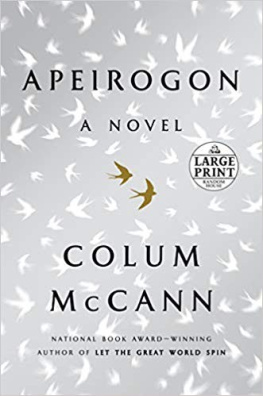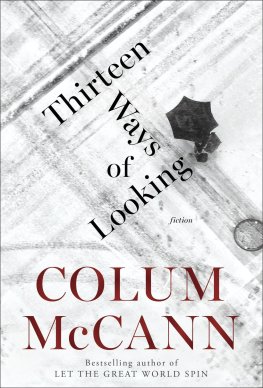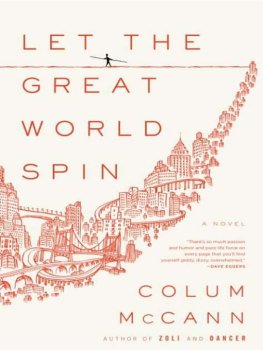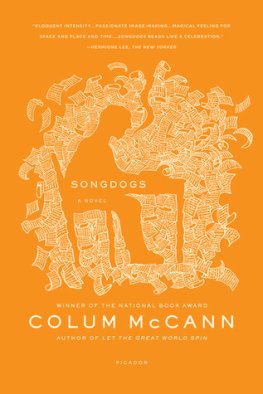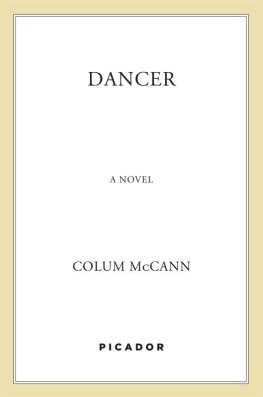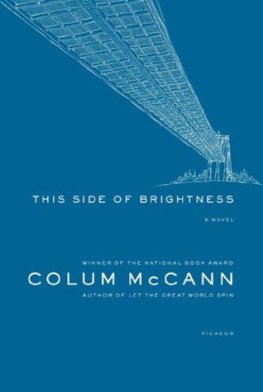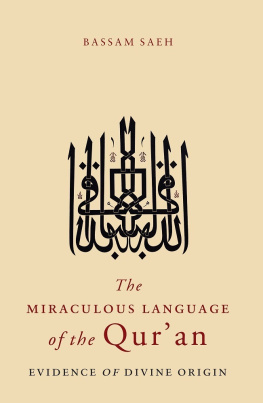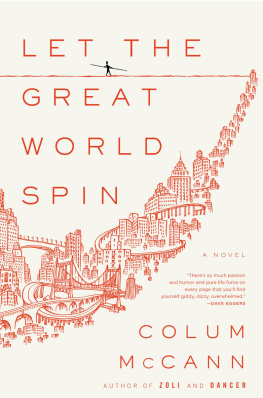Apeirogon is a work of fiction. All incidents and dialogue, and all characters with the exception of some historical and public figures, are products of the authors imagination. Where real-life figures appear, the situations, incidents, and dialogues concerning those persons are fictional. Names, characters, places, and incidents are either the products of the authors imagination or are used fictitiously. In all other respects, any resemblance to persons living or dead is entirely coincidental. Copyright 2020 by Colum McCann All rights reserved. Published in the United States by Random House, an imprint and division of Penguin Random House LLC, New York. R ANDOM H OUSE and the H OUSE colophon are registered trademarks of Penguin Random House LLC. Grateful acknowledgment is made to WC Music Corp. and Universal Music MGB Ltd./Universal MusicCareers (BMI) for permission to reprint an excerpt from Once in a Lifetime, words and music by Tina Weymouth, Chris Frantz, David Byrne, Brian Eno, and Jerry Harrison, 1980 Index Music, Inc. (ASCAP) and WC Music Corp. (ASCAP), published by Universal Music MGB Ltd./Universal MusicCareers (BMI). All rights on behalf of itself and Index Music, Inc., administered by WC Music Corp. Reprinted by permission. Illustration credits are located on . LIBRARY OF CONGRESS CATALOGING-IN-PUBLICATION DATA Names: McCann, Colum, author. Title: Apeirogon : a novel / Colum McCann. Description: New York : Random House, 2020. Identifiers: LCCN 2019022848 (print) | LCCN 2019022849 (ebook) | ISBN 9781400069606 (hardcover) | ISBN 9780679604600 (ebook) Subjects: LCSH: Jewish-Arab relationsFiction. | Palestinian ArabsFiction. | IsraelisFiction. | Political fiction. lcgft Classification: LCC PR 6063. C A 65 2020 (print) | LCC PR 6063. C 335 (ebook) | DDC 823/.914dc23 LC record available at https://lccn.loc.gov/2019022848 LC ebook record available at https://lccn.loc.gov/2019022849 International edition ISBN 9780593134511 Ebook ISBN9780679604600 randomhousebooks.com Book design by Simon M. Sullivan, adapted for ebook Cover design: Lucas Heinrich v5.4 ep
Contents
authors note
Readers familiar with the political situation in Israel and Palestine will notice that the driving forces in the heart of this book, Bassam Aramin and Rami Elhanan, are real. By real I mean that their storiesand those of their daughters, Abir Aramin and Smadar Elhananhave been well documented in film and print.The transcripts of both men in the center section of the book are pulled together from a series of interviews in Jerusalem, New York, Jericho and Beit Jala, but elsewhere in this book Bassam and Rami have allowed me to shape and reshape their words and worlds.Despite these liberties, I hope to remain true to the actual realities of their shared experiences. We live our lives, suggested Rilke, in widening circles that reach out across the entire expanse.
2016
The hills of Jerusalem are a bath of fog. Rami moves by memory through a straight stretch, and calculates the camber of an upcoming turn.
Sixty-seven years old, he bends low on the motorbike, his jacket padded, his helmet clipped tight. It is a Japanese bike, 750 cc. An agile machine for a man his age.
Rami pushes the bike hard, even in bad weather.
He takes a sharp right at the gardens where the fog lifts to reveal dark. Corpus separatum. He downshifts and whips past a military tower. The sodium lights appear fuzzy in the morning. A small flock of birds momentarily darkens the orange.
At the bottom of the hill the road dips into another curve, obscured in fog. He taps down to second, lets out the clutch, catches the corner smoothly and moves back up to third. Road Number One stands above the ruins of Qalunya: all history piled here.
He throttles at the end of the ramp, takes the inner lane, passing signs for The Old City, for Givat Ram. The highway is a scattershot of morning headlights.
He leans left and salmons his way out into the faster lane, toward the tunnels, the Separation Barrier, the town of Beit Jala. Two answers for one swerve: Gilo on one side, Bethlehem on the other.
Geography here is everything.
THIS ROAD LEADS TO AREA AUNDER THE PALESTINIAN AUTHORITYTHE ENTRANCE FOR ISRAELICITIZENS IS FORBIDDENDANGEROUS TO YOUR LIVESAND IS AGAINST THE ISRAELI LAW
Five hundred million birds arc the sky over the hills of Beit Jala every year. They move by ancient ancestry: hoopoes, thrushes, flycatchers, warblers, cuckoos, starlings, shrikes, ruffs, northern wheatears, plovers, sunbirds, swifts, sparrows, nightjars, owls, gulls, hawks, eagles, kites, cranes, buzzards, sandpipers, pelicans, flamingos, storks, pied bushchats, griffon vultures, European rollers, Arabian babblers, bee-eaters, turtledoves, whitethroats, yellow wagtails, blackcaps, red-throated pipits, little bitterns.
It is the worlds second busiest migratory superhighway: at least four hundred different species of birds torrent through, riding different levels in the sky. Long vees of honking intent. Sole travelers skimming low over the grass.
Every year a new landscape appears underneath: Israeli settlements, Palestinian apartment blocks, rooftop gardens, barracks, barriers, bypass roads.
Some of the birds migrate at night to avoid predators, flying in their sidereal patterns, elliptic with speed, devouring their own muscles and intestines in flight. Others travel during the day to take advantage of the thermals rising from below, the warm wind lifting their wings so they can coast.
At times whole flocks block out the sun and daub shadows across Beit Jala: the fields, the steep terraces, the olive groves on the outskirts of town.
Lie down in the vineyard in the Cremisan monastery at any time of day and you can see the birds overhead, traveling in their talkative lanes.
They land on trees, telegraph poles, electricity cables, water towers, even the rim of the Wall, where they are a sometime target for the young stone throwers.
The ancient sling was made of a cradle of cowskin, the size of an eye-patch, pierced with small holes and held together with leather thongs. The slings were designed by shepherds to help scare away predatory animals from their roving flocks.
The pouch was held in the shepherds left hand, the cords in his right. Considerable practice was needed to operate it with accuracy. After placing a stone in the pad, the slingman pulled the thongs taut. He swung it wide above his head several times until the moment of natural release. The pouch opened and the stone flew. Some shepherds could hit a target the size of a jackals eye from two hundred paces.
The sling soon made its way into the art of warfare: its capacity to fire up a steep slope and battlement walls made it critical in assaults on fortified cities. Legions of long-range slingmen were employed. They wore full body armor and rode chariots piled with stone. When the territory became impassiblemoats, trenches, dry desert gulches, steep embankments, boulders strewn across the roadsthey descended and went on foot, ornamental bags slung over their shoulders. The deepest held up to two hundred small stones.
In preparation for battle it was common to paint at least one of the stones. The talisman was placed at the bottom of the bag when the slingman went to war, in the hope he would never reach his final stone.
At the edges of battle, childreneight, nine, ten years oldwere enlisted to shoot birds from the sky. They waited by wadis, hid in desert bushes, fired stones from fortified walls. They shot turtledoves, quail, songbirds.
Some of the birds were captured still living. They were gathered up and put into wooden cages with their eyes gouged out so that they would be fooled into thinking that it was a permanent nighttime: then they would gorge themselves on grain for days on end.
Fattened to twice their flying size, they were baked in clay ovens, served with bread, olives and spices.
Next page
